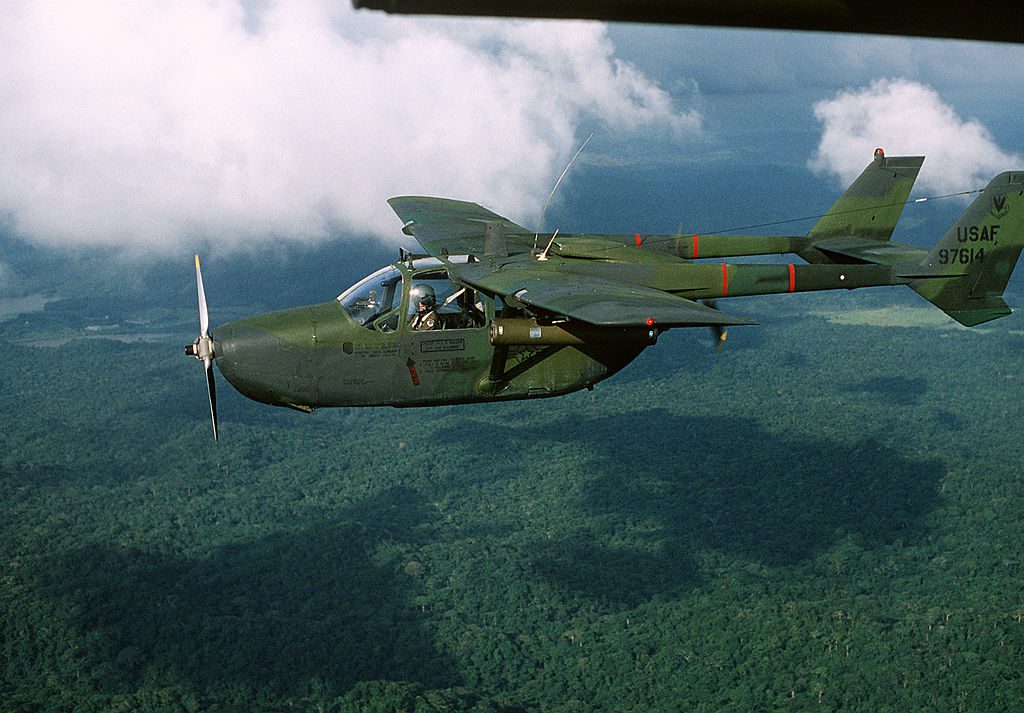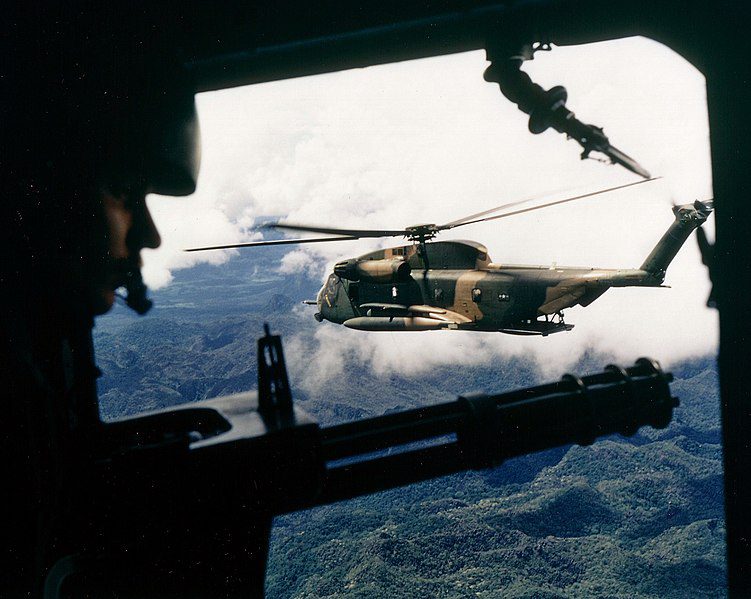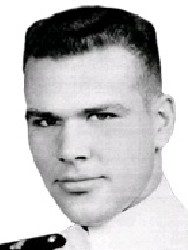Everyone who has any interest in the Vietnam War period has heard about the secret air war in Laos, of Air America and the infamous ‘Ravens’ – Forward Air Controllers (FAC’s) who flew dangerous missions in combat zones where they did not technically exist. A similar, highly Top Secret group of FAC’s also flew over Cambodia. They were identified by the callsign “RUSTIC”
On April 30, 1970, President Nixon announced on American television that US troops were entering Cambodia. The so-called Cambodian Campaign, or Cambodian incursion proved to be short-lived, and following political objections from Congress, American ground troops were fully withdrawn by the end of June.
The recently leadership of the newly installed Khmer Republic under Lon Nol desperately wanted the Americans to stay, as North Vietnamese and their Cambodian Communist allies regrouped and continued to occupy much of the north and east.
Instead, a highly top-secret program was arranged, directly managed by the White House. Indeed, so secret was this that next to no documentation or official records were made.
With rules of engagement changing, the definition of ‘air support’, still permitted was somewhat of a gray area, and so limited military assistance for the beleaguered government of Lon Nol was provided this way.
A Forward Air Control (FAC) force was assembled from a detachment of the 19th Tactical Air Support Squadron (TASS), with pilots flying OV-10A ‘Broncos’ and O-2A ‘Skymaster’ aircraft, both twin propeller planes which came into service during the late 1960’s.


These aircraft, which operated 24 hours a day over Cambodian airspace, were the eyes and ears on Vietnamese positions on the ground- flying ‘low and slow’ over targets and calling in enemy locations to Cambodian army forces (FANK) and for attack jets and other bombers operating out of South Vietnam and Thailand. These FAC’s were all given the callsign ‘Rustic’, and for three years would co-ordinate the fight between the Cambodian armed forces (FANK) on the ground and further air support.

The Vietnam War will always be remembered as an appalling tragedy, but also one of, at times, absurdity bordering on farce. The clandestine ‘Rustic’ program fits both.
As communication with the ‘eye in the sky’ and the Cambodian troops below was vital, it quickly became apparent that language difficulties were hampering results. Discovering that many Cambodian officers had either trained, or been moderately educated, in French- thanks to the former colonial system- a search went out to find Francophonic US servicemen on duty in Vietnam. The results led to cooks, stewards and clerks flying as FANs (Forward Air Navigators) with combat pilots, relaying coordinates and other information to Francophone Cambodian ground controllers. These ‘volunteers’ did so without ‘earning their wings’, medals, or receiving any extra ‘hazard pay’ normally associated with such dangerous missions.
Other times, Cambodian servicemen filled the observer seat in the OV-10’s, such as Sgt. Chap Khorn, who on September 26, 1971, climbed in the cockpit behind Lt. Lansford E. Trapp Jr.- callsign “Rustic 07”- at Bien Hoa Airbase – and took off for a mission over Eastern Cambodia.

The aircraft was brought down by fire- most likely from a 12.7mm 6P50 DShK (ДШК) anti-air machine gun- but luckily both men managed to eject safely, and parachuted down around 16 km northwest of Kampong Cham town (probably around Phnom Srei).
In an interview with his grandson recorded in 2018, the then General Lansford E. Trapp described the incident.
“When I was a lieutenant, and this would have been in 1971, I was flying an observation aircraft over in Vietnam. I was on a mission over in Cambodia and we were helping ground forces who were fighting against bad guys over there. That ensuing battle that went on as I was flying over head in my airplane, we actually got hit by ground fire and the left wing of the airplane caught on fire.
I had a Cambodian interpreter sitting in my back seat, a sergeant Chung (Khorn), and it was his seventh ride in an airplane. I didn’t even know that the wing was on fire until one of the other airplanes came by and said “hey your left wing is on fire”. So, I looked out, my wing was on fire, and we decided that i was gonna be able to land at one of the airports that was right there. So, we came in and tried to land, but I lost control of the airplane. So, I pushed the power back in and climbed up over the airfield. Then the left wing burned off, and so we started in a pretty good spiral into the wing that had burned off. We ejected from the airplane.
Sergeant Corn (Khorn) went out first, and then I went out. The craziest thing was that we used to fly with about 250 to 300 big maps, so we could look at the country as we were trying to figure out where we were. Those all came flying out of the cockpit as we ejected. It looked like confetti outside. As we came down sergeant Corn he got burned pretty bad from the wing fire, and I banged my ankle up pretty badly, but we were ok. We got picked up by friendly forces and I got a nice helicopter ride back to home base that night.”

With the downed airman surrounded and in danger of being captured or killed, a ‘Super Jolly Green Giant’ HH-53C Search & Rescue (SAR) team were scrambled-crewed by USCG Lt. Cmdr. Joseph L. Crowe, Jr. (Pilot), Hampton (Co-Pilot), William Simm (Force Enhancement ‘gunner’), Daniel G. Manion (Para Jumper) and Richard L. Steed (Para Jumper).
Both airmen were successfully lifted to safety, with chopper pilot Lt. Cmdr Crowe later awarded the Distinguished Flying Cross for his actions.
“The President of the United States of America takes pleasure in presenting the Distinguished Flying Cross (Air Force Award) to Lieutenant Commander Joseph L. Crowe, Jr., United States Coast Guard, for extraordinary achievement while participating in aerial flight as an Aircraft Commander on an HH-53c Rescue Helicopter, attached to the 37th Aerospace Rescue and Recovery Squadron, United States Air Force, in action at Kampong Cham, Cambodia, on 26 September 1971. On that date, Commander Crowe’s outstanding airmanship, exemplary leadership and sound technical skill resulted in the successful rescue of two aircrew members who had been downed by hostile fire. Commander Crowe, knowing that hostile locations were within two miles, executed a spiraling descent to a landing, keeping his helicopter over friendly territory at all times. The professional competence, aerial skill, and devotion to duty displayed by Commander Crowe reflect great credit upon himself and the United States Air Force.”

Capt. Joseph L. Crowe, USCG (Retired) passed away on 22 February 2003, at his home in Port Angeles, Washington State, aged 63.

The rescued pilot Lansford E. Trapp Jr, rose to the rank of vice commander, Pacific Air Forces, Hickam Air Force Base, Hawaii, and retired on March 1,2002.
His military record does not mention his shooting down over Cambodia- only “November 1970 – November 1971, OV-10A forward air controller, 22nd Tactical Air Control Squadron, Bien Hoa Air Base, South Vietnam”

The other crew members are not listed on any Vietnam memorials, so it can be assumed they survived the war. The fate of Sgt. Chap Khorn can only be guessed.
Pilots were regularly rotated, and some 250 passed through the Rustic program, with three FACs killed in action.
The covert air war was ended on August 15, 1973- from that day on the Cambodian radio operators’ calls for air support were no longer answered. Many felt that their own government was abandoning their allies in Cambodia, Lt Col. Mark Berent, USAF (Ret.), the Air Attaché’ in the American Embassy in Phnom Penh, Cambodia, said “The Rustics gave the Cambodians just as much courage and skill in return as they have given the American ground troops in Vietnam.”



By History Steve.

What is the purpose of all these recent articles lauding and praising Americans (18th century escapades and now their Vietnam war stories!). This is disgusting! Must be an American behind all these articles! CNE is supposed to report on news and not on American intrusions in this country!
Bet you’re fun at parties